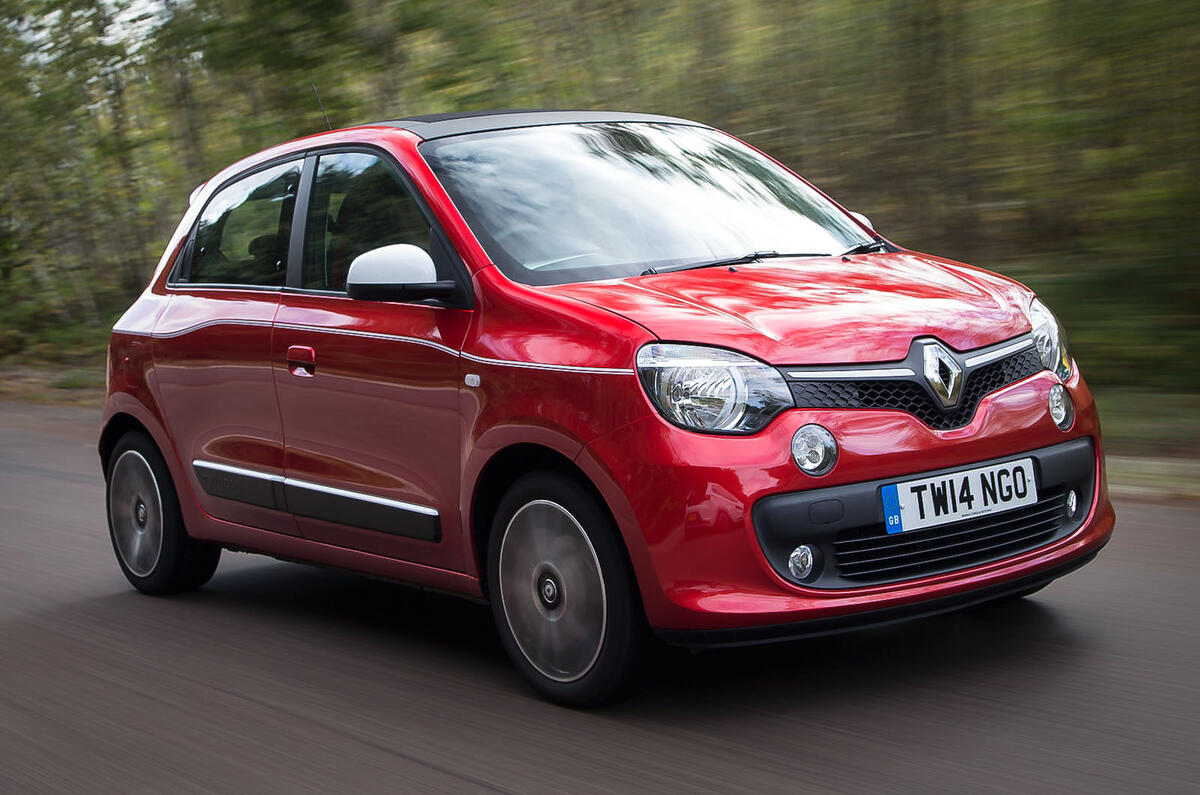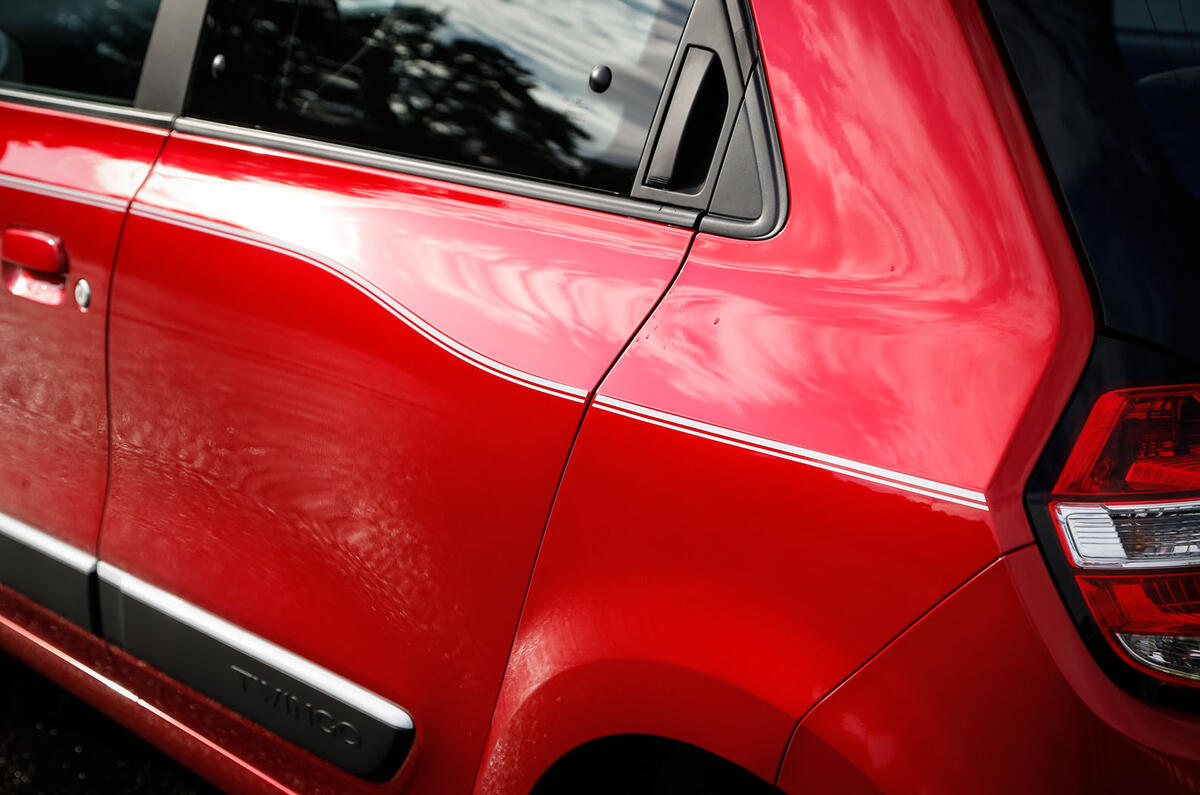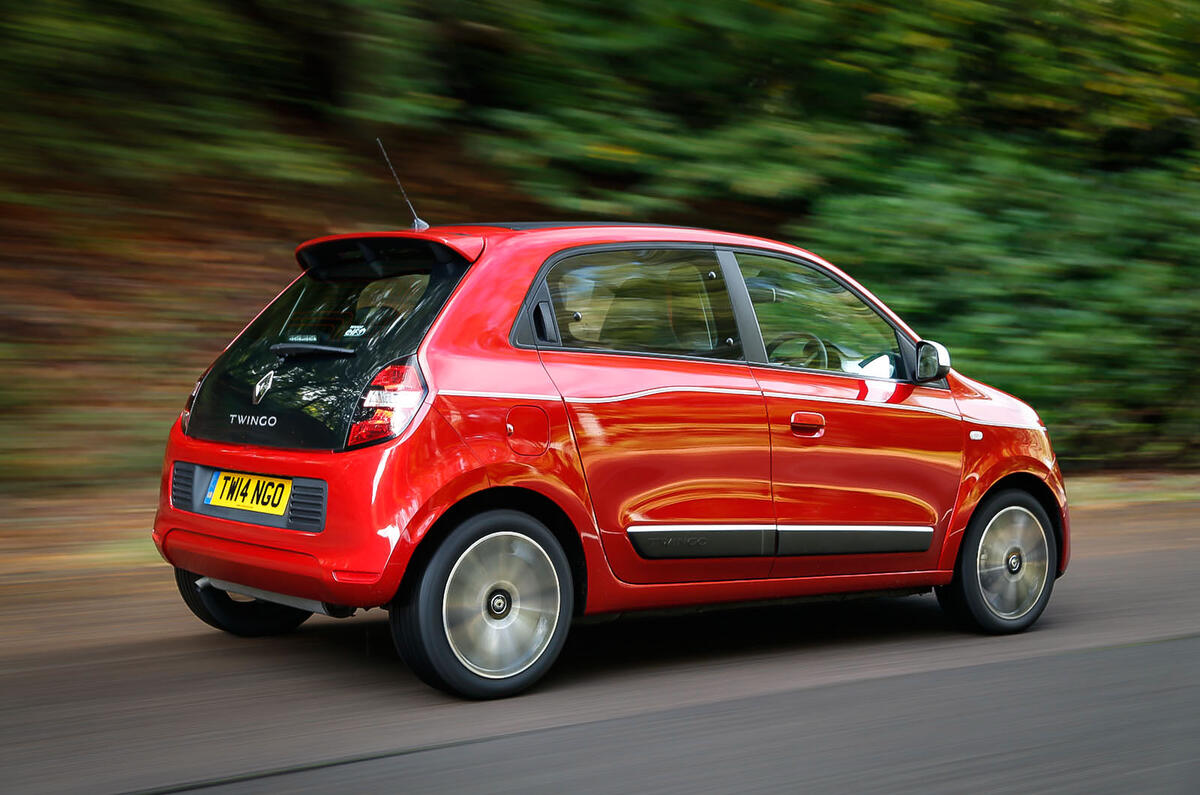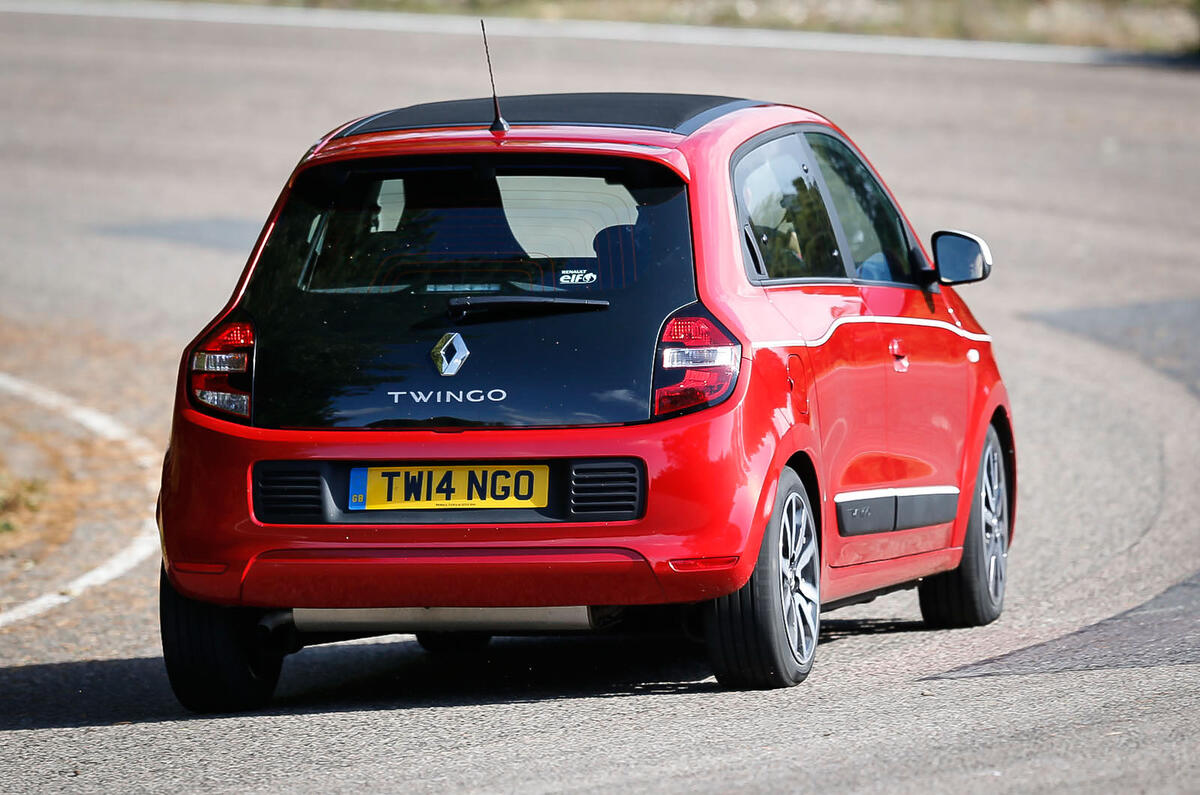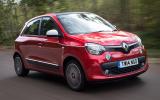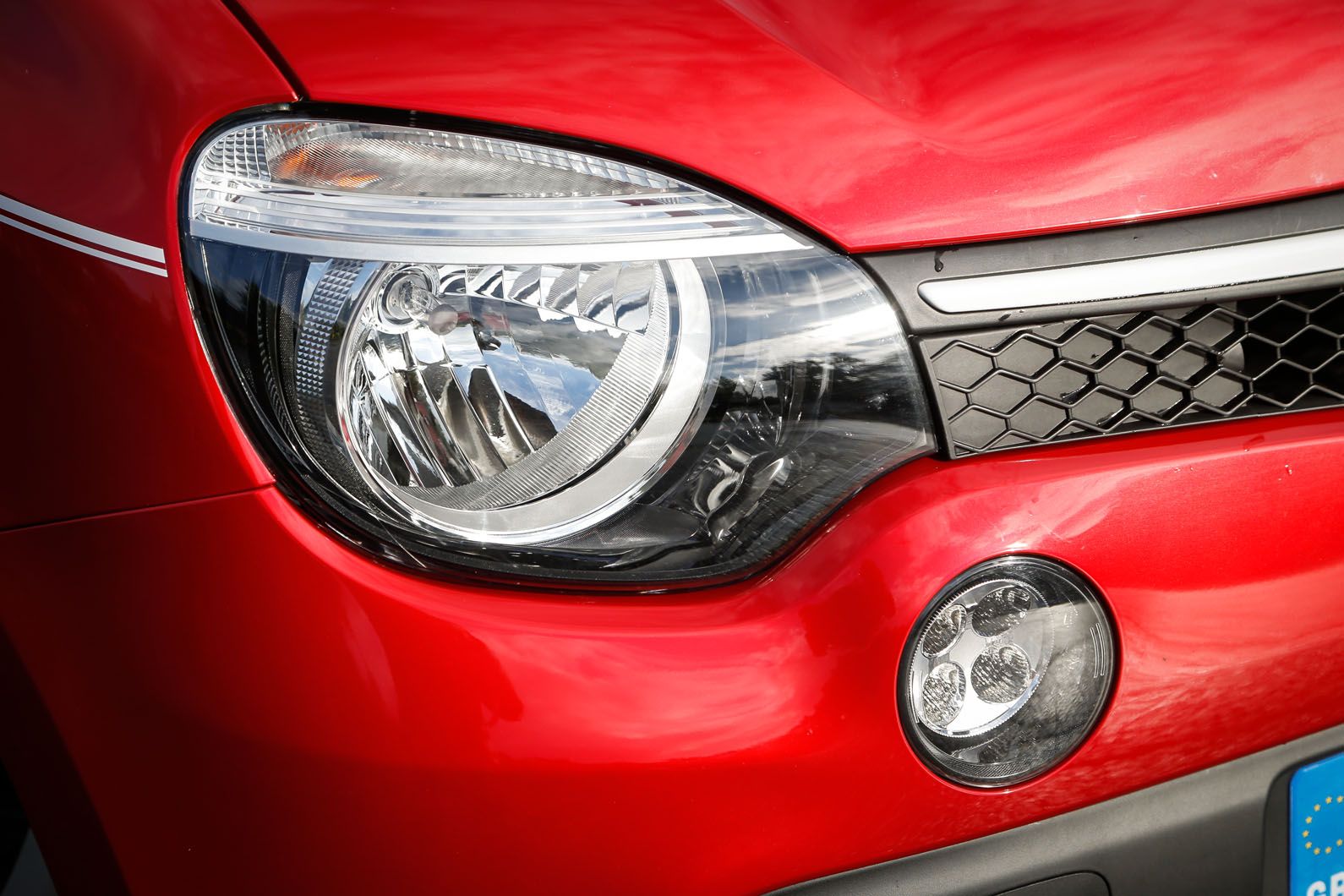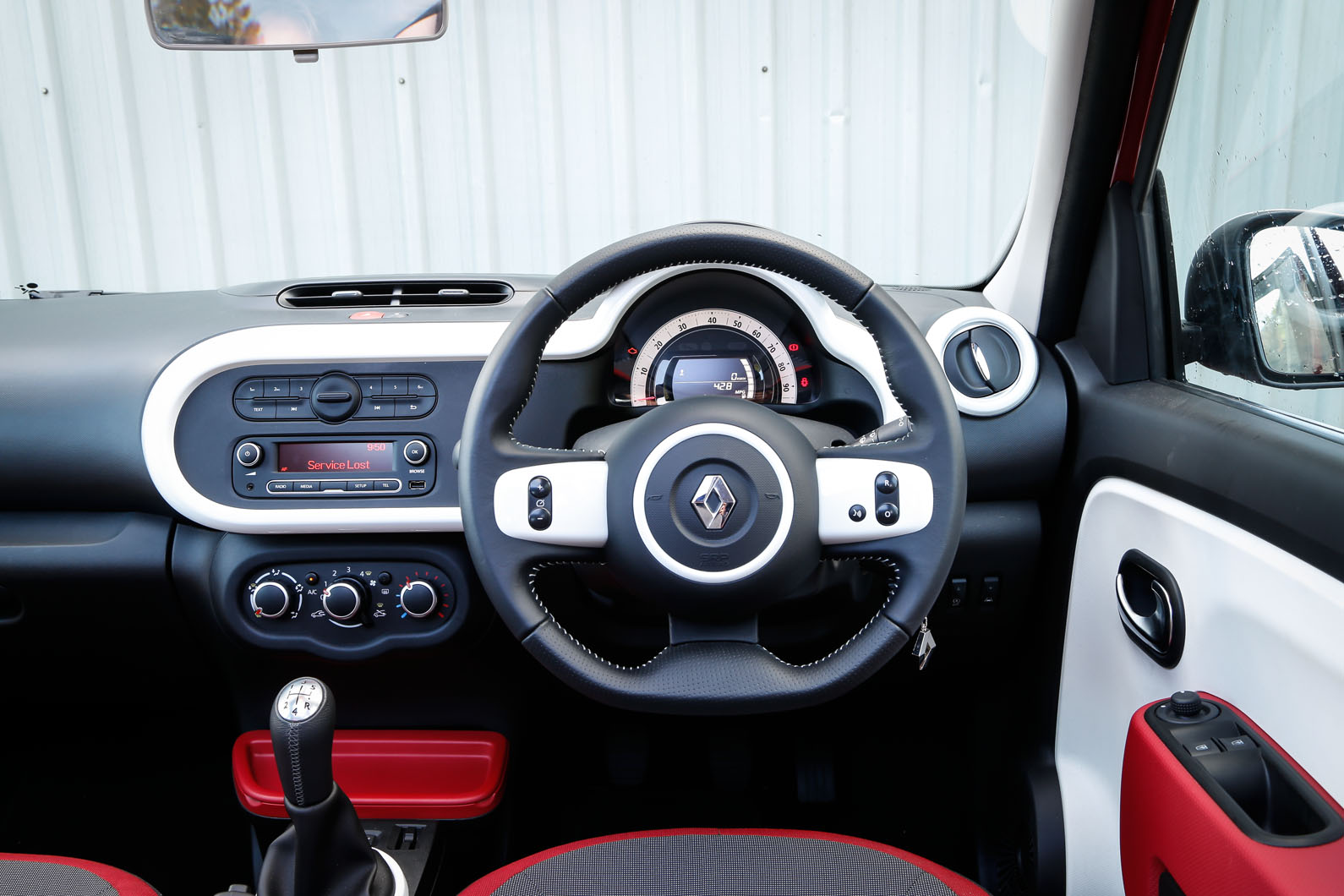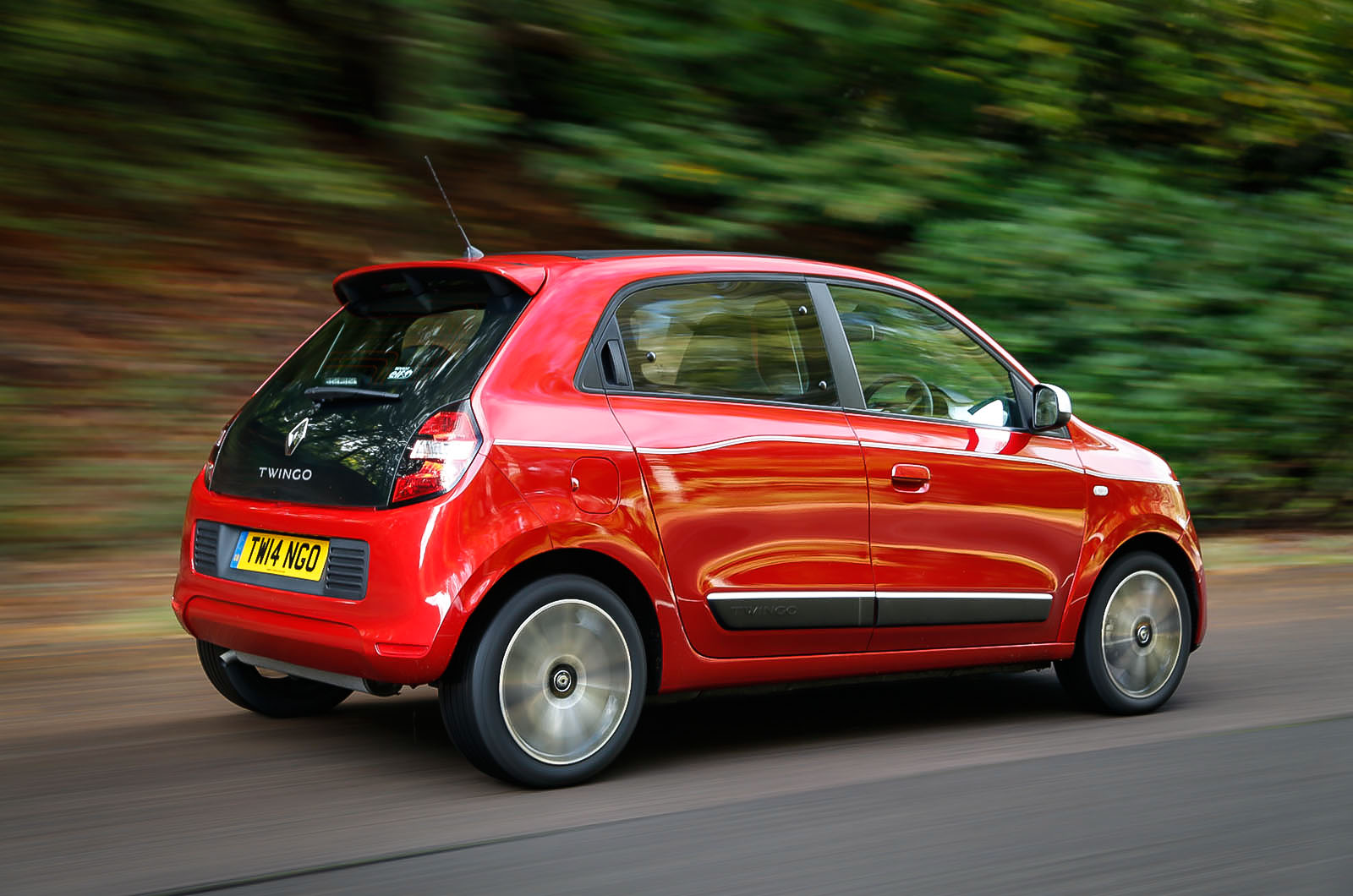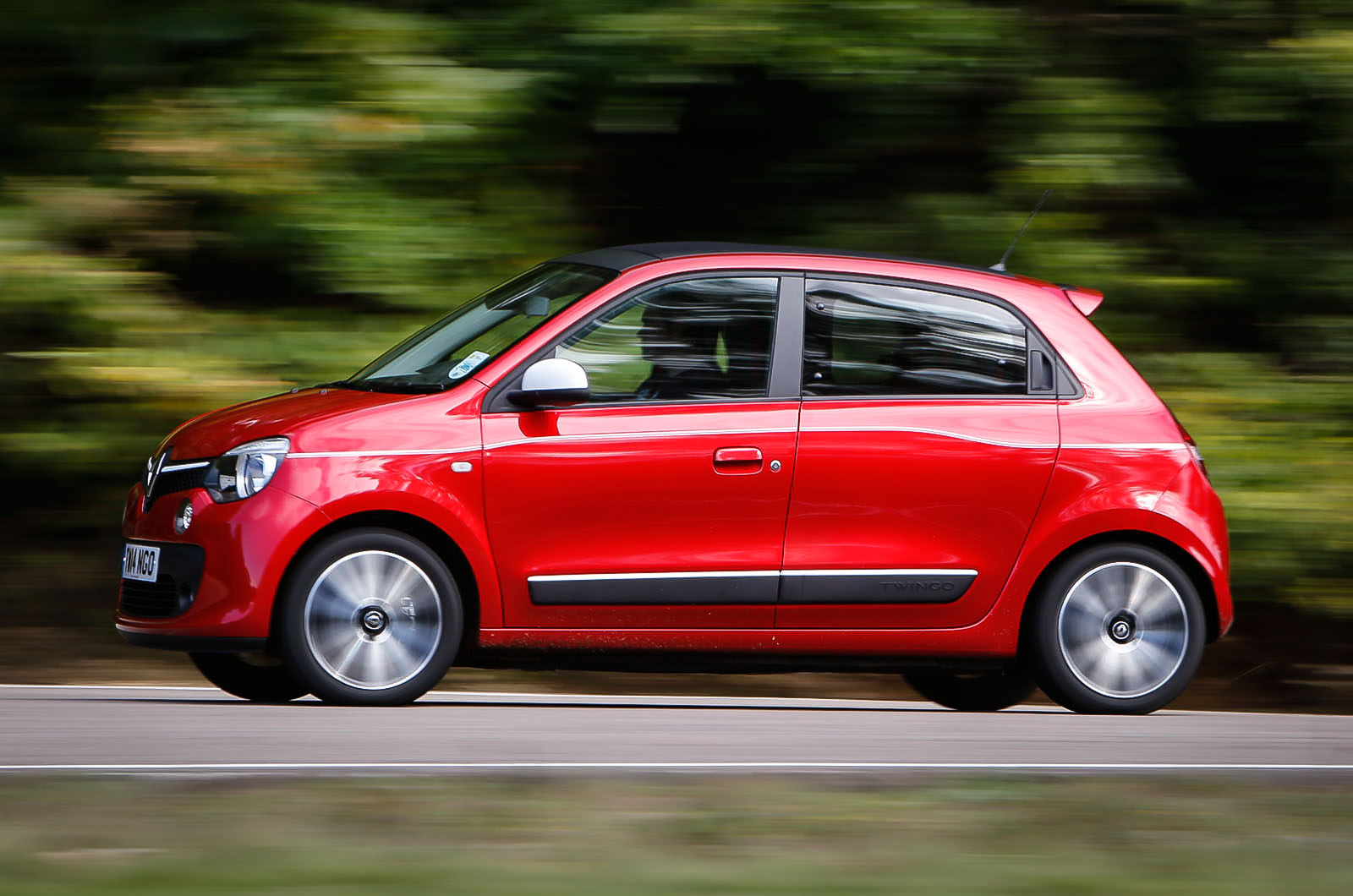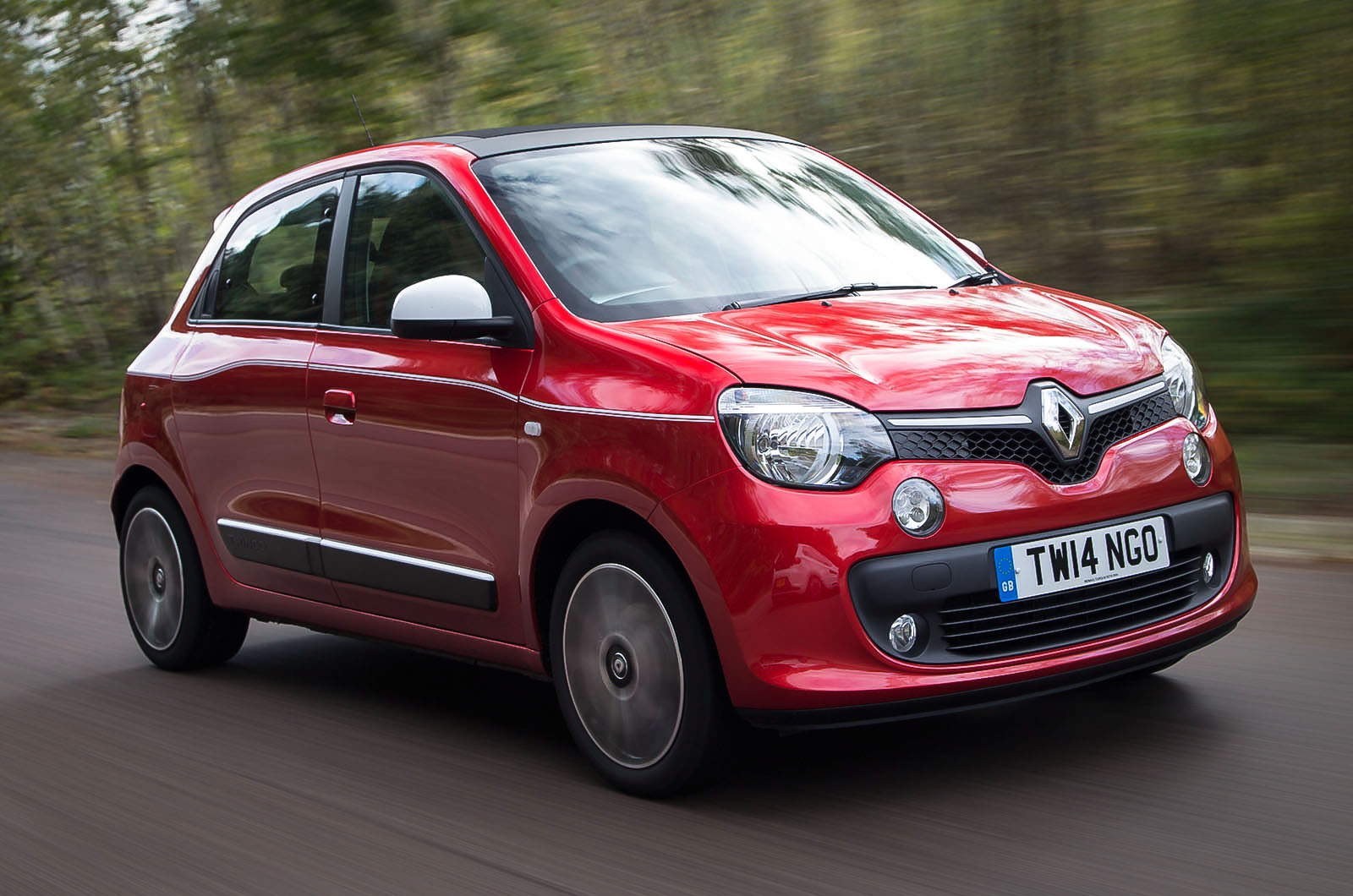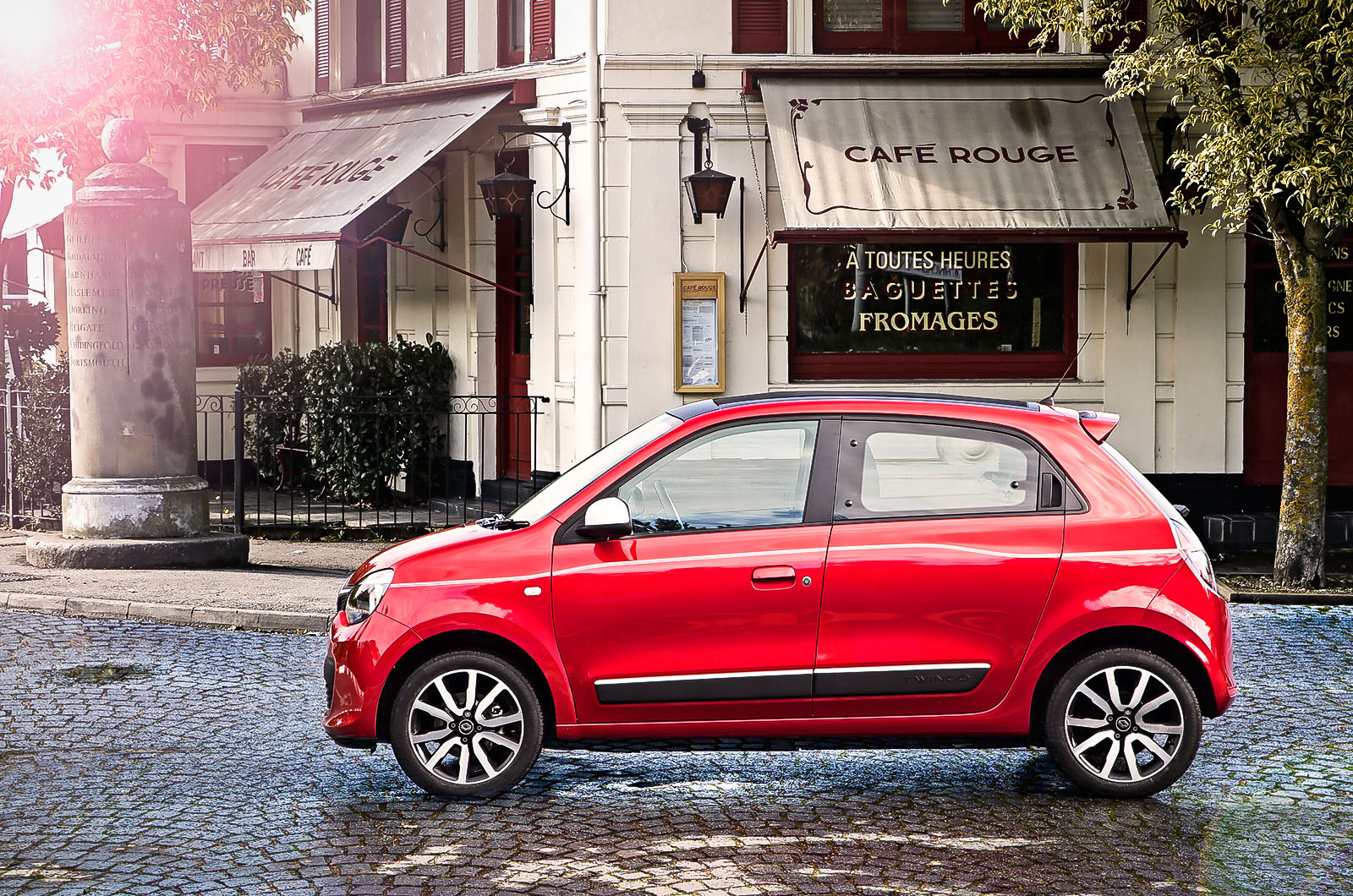Trim levels consist of entry-level Expression, mid-spec Play, Dynamique and flagship Dynamique S, while the GT model gets its own trim alongside its exclusive engine.
Opt for an Expression trimmed Twingo and you'll find 15in steel wheels, LED day-running-lights and hill start assist on the outside as standard, while inside there is Bluetooth, USB connectivity, a smartphone cradle and front electric windows.
Upgrade to Play and luxuries such as air conditioning and a height adjustable driver's seat is added to the package, while the Dynamique models gain cruise control, front foglights, 15in alloy wheels, and electrically adjustable and heated door mirrors.
Topping the standard Twingo range is the Dynamique S trim which adorns the Twingo with 16in alloys, a sporty-looking bodykit, a part leather upholstery and orange interior details, while the RenaultSport tweaked GT model includes, 17in alloys, a beefier bodykit inclusive of a rear diffuser, twin chrome exhaust system, and sports-tuned chassis and suspension as standard. Inside there is automatic lights and wipers, climate control and tinted rear windows thrown in.
But Renault aren't finished there, as they have offered six personality packs for owners to choose from to help them showcase a bit of their character through their Twingo.
The Twingo’s cabin has plenty of colour and visual interest, as well as some novel storage solutions, but there’s a bit of sleight of hand going on in here: eye-catching features intended to cover up for a cabin that isn’t as practical as it should be.
The driving position is sound, but you don’t get the reach adjustment on entry-level models, and neither do you get ISOFIX child seat anchorages for the front seat as standard, which could be an issue for parents with child seats that are too bulky for the back. Adding ISOFIX points to the front requires that you opt for the 'Seats pack', which also adds front seat heating.
There’s decent room for your extremities up front but headroom in the back is poor. Most adults will struggle with only 860mm of it. An Volkswagen Up gives you 920mm and most family-sized cars at least 950mm.
Up front, we like the pragmatic universal mounting clip for a smartphone, which fits neatly into the centre of the audio control console. Less impressive is the gimmicky storage box, which doesn’t fit so neatly into its dock ahead of the gearlever and sticks out sufficiently proud of the fascia to foul your left leg. There’s a pair of cupholders underneath it, but they’re small and shallow.
The seats are comfortable and the front passenger’s seatback folds flat to allow through-loading. But the boot is only averagely large for the class. Our biggest disappointment, though, is not to see more imagination in the layout of the instruments and secondary controls.
The original Twingo had centrally cited dials, vibrant upholstery and handy storage cubbies crammed into every corner but it was also a car introduced before the widespread adoption of airbags. But despite having two extra doors and a sunroof, this Twingo still isn’t flattered by the comparison.
In a fairly obvious bit of marketing, Renault has identified that this car will be bought by the smartphone generation so it has provided a handy universal mount to hold said hardware. It fits neatly into the fascia, has its own USB connection and power supply and it’s standard equipment. Genius.
Download Renault’s free R&GO app to your phone and you’ll also instantly endow your Twingo with navigation, extended communication, multimedia and trip computer functions. The nav is provided by CoPilot and the mapping is downloaded with the app, so using it doesn’t eat into your data allowance.
Renault’s R-Link touchscreen multimedia set-up is optional on Dynamique spec cars. it has a 7in screen, voice control and surround-sound audio by Arkamys. It’s part of a Techo Pack, together with a reversing camera. We can’t imagine that many will go for it, though.



